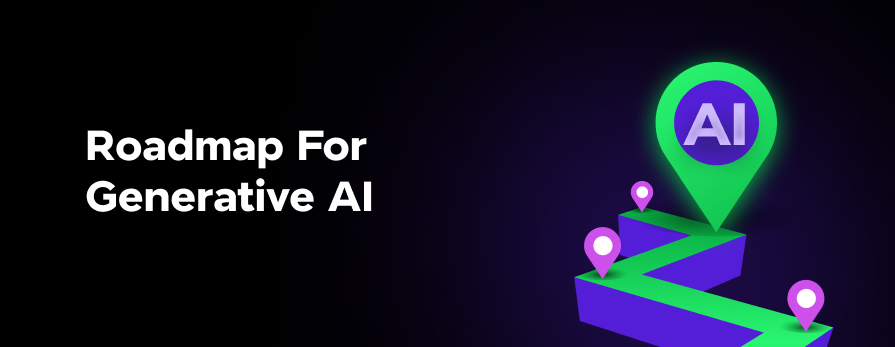
A Complete Roadmap for Generative AI
Mar 03, 2025 7 Min Read 9528 Views
(Last Updated)
In this ever-evolving world where innovation is happening every other day, how to stay updated? The answer is through learning emerging technologies and keeping up with trends.
One of those important trending technologies is Generative AI and it is high time that you get on the bandwagon. If you are unsure where to start or how to start, worry not; we have you covered!
This article provides a comprehensive roadmap for Generative AI that guides you through the subject and helps you form a clear career path. So, without any delay, let us get started!
Table of contents
- What is Generative AI? Why Should You Learn It?
- Responsibilities of a Gen AI Developer:
- Roadmap for Generative AI - Things To Learn To Get You Started!
- Understand the Fundamentals of AI and Machine Learning
- Get Familiar with Neural Networks
- Dive Into Generative Models
- Explore Popular Frameworks and Tools
- Work on Real-World Projects
- Stay Updated with the Latest Research
- Understand Ethical Considerations
- Develop Your Portfolio
- Network and Collaborate
- Pursue Certifications and Advanced Courses
- Future of Generative AI: What To Look Out For?
- Conclusion
- FAQs
- What is the Generative AI roadmap?
- How to learn Generative AI from scratch?
- What skills are necessary to start learning Generative AI?
- How long does it take to learn Generative AI?
- What are the career opportunities in Generative AI?
- What is the difference between GANs and VAEs?
What is Generative AI? Why Should You Learn It?
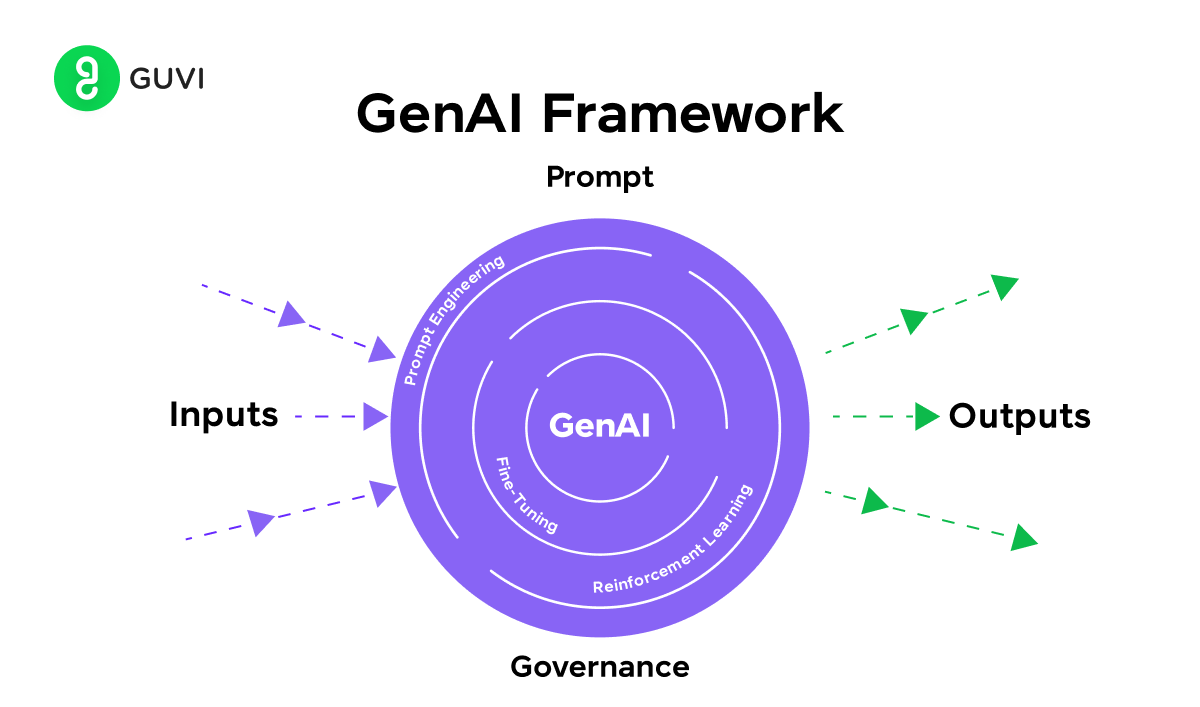
By definition, generative AI is a subset of artificial intelligence that can create new content, such as text, images, music, or even code, based on patterns and information they’ve learned from existing data. Unlike traditional AI models that are solely programmed to analyze or categorize existing information, generative AI can produce original content that didn’t previously exist.
Learning generative AI is essential because it puts you at the cutting edge of technology, opening up exciting career opportunities across various industries.
It allows you to utilize the AI’s creative power to generate new content, solve complex problems, and automate tasks, making you more productive and innovative.
As AI continues to shape the future and since most tech companies rely heavily on it, understanding generative AI ensures you stay relevant and competitive in a rapidly evolving job market, while also giving you the skills to contribute to responsible and ethical AI development.
Responsibilities of a Gen AI Developer:
As a Generative AI developer, your responsibilities revolve around creating and fine-tuning AI models that can generate new content, such as images, text, music, or even code. Here’s what you might do:
- Building Models: You’ll design and build generative models, like GANs or VAEs, that can create new data from existing data. This involves programming and experimenting with different neural network architectures.
- Training Models: You’ll gather and prepare data to train your models, ensuring they learn to produce high-quality, realistic outputs. This means working with large datasets and running training processes that can take hours or even days.
- Optimizing Performance: You’ll tweak and fine-tune your models to improve their performance, making them faster and more accurate. This involves adjusting parameters, testing different algorithms, and solving any issues that arise.
- Testing and Evaluation: You’ll rigorously test your models to ensure they generate the desired output without errors or biases. You’ll also compare their performance against benchmarks to see how well they’re doing.
In case you want to learn more about Gen AI from scratch and how it enhances your daily life, consider enrolling in GUVI’s self-paced Generative AI course that also provides you with an industry-worthy certificate.
Roadmap for Generative AI – Things To Learn To Get You Started!
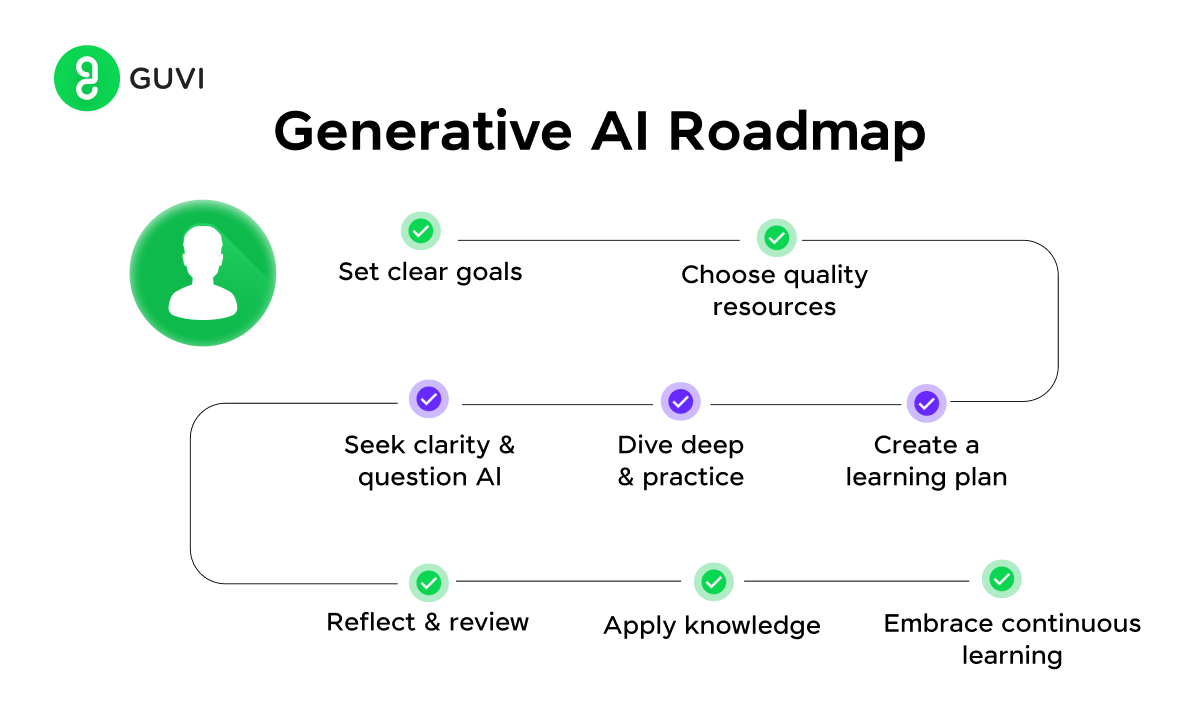
Whenever you start learning something new, it is important to have a plan. That gives you a clear-cut idea of where to start and how to proceed. Keeping that in mind, we formulated this section that speaks everything about the roadmap for generative AI.
Here are the things that you need to learn to get started on the generative AI roadmap journey:
1. Understand the Fundamentals of AI and Machine Learning
Before diving into generative AI, make sure you have a solid understanding of general AI and machine learning (ML) concepts.
If you haven’t already, you should familiarize yourself with topics like supervised and unsupervised learning, neural networks, and deep learning.
- Why This is Important: Generative AI builds upon the core principles of AI and ML. If you’re not familiar with these basics, it will be difficult to grasp the more advanced concepts required in generative AI.
- What to Focus On:
- Supervised Learning: Understand how models are trained on labeled data to make predictions. This will give you a foundation for understanding more complex AI models.
- Unsupervised Learning: Explore how models find patterns in data without explicit instructions. Techniques like clustering and dimensionality reduction are key here.
- Deep Learning: Dive into the structure of neural networks and how they learn from large datasets. This is the backbone of many generative models.
2. Get Familiar with Neural Networks
Generative AI heavily relies on neural networks, so having a deep understanding of how they work is essential. You should explore concepts like feedforward networks, backpropagation, and activation functions. .
- Why This is Important: Neural networks are at the heart of generative AI. Without a strong grasp of how they function, you’ll struggle to implement generative models effectively.
- Key Concepts:
- Feedforward Neural Networks: Learn how data flows through layers of neurons and how weights are adjusted during training.
- Backpropagation: Understand the mechanism that allows networks to learn from their mistakes by adjusting weights based on error.
- Activation Functions: Explore how these functions introduce non-linearity into the model, enabling it to learn complex patterns.
- Advanced Architectures: Once you’re comfortable with basic neural networks, study Convolutional Neural Networks (CNN) and Recurrent Neural Networks. CNNs are crucial for image-related tasks, while RNNs are used for sequential data like text.
3. Dive Into Generative Models
Generative AI is all about creating new data, whether it’s text, images, or even music.
- Why This is Important: Generative models are what make generative AI possible. These models can create new data that resembles existing data, opening up a world of possibilities from AI art to drug discovery.
- Key Models to Master:
- Generative Adversarial Networks (GANs): Learn how GANs consist of two models: the generator (which creates data) and the discriminator (which evaluates the data). This adversarial process leads to the generation of highly realistic data.
- Variational Autoencoders (VAEs): VAEs encode input data into a latent space and then decode it back to generate new data. They are particularly useful for generating variations of input data.
- Transformer Models: Transformers like GPT-3 (ChatGPT) are used for tasks like text generation, translation, and summarization. Understanding how attention mechanisms work within these models is key to mastering text-based generative AI.
If you are intrigued by the working nature of ChatGPT and want to learn more about it, consider enrolling for GUVI’s ChatGPT Course that covers every aspect related to it!
4. Explore Popular Frameworks and Tools
You’ll need to get hands-on with generative AI frameworks and tools. Start with TensorFlow and PyTorch, two of the most popular frameworks for building and training generative models.
If you’re interested in text generation, look into Hugging Face Transformers. For GANs, explore tools like GANLab or even implement simple GANs yourself.
Key Frameworks:
- TensorFlow: Known for its flexibility, TensorFlow is widely used in both research and industry. It’s ideal for building complex models and deploying them at scale.
- PyTorch: PyTorch’s dynamic computation graph and intuitive design make it a favorite among researchers. It’s particularly well-suited for experimenting with new models.
- Hugging Face Transformers: If you’re focusing on text generation, Hugging Face offers pre-trained models that you can fine-tune for your specific tasks.
- Why This is Important: Hands-on experience with AI frameworks is crucial for applying your theoretical knowledge. These tools allow you to build, train, and deploy generative models effectively.
5. Work on Real-World Projects
Theory is essential, but practice is where you’ll solidify your knowledge through projects. Start by building simple generative models, such as a GAN for generating images or a VAE for creating variations of input data.
As you get more comfortable, take on more complex projects like generating realistic human faces or writing AI-generated stories.
- Why This is Important: Applying what you’ve learned in real-world scenarios helps reinforce your knowledge and gives you practical experience. This is where the theory meets application.
- Project Ideas:
- Image Generation: Start by building a GAN that generates realistic images. You can use datasets like MNIST (for digits) or CIFAR-10 (for more complex images).
- Text Generation: Implement a text generator using GPT-2 or GPT-3 models. You can train your model to generate poetry, stories, or even code.
- Music Generation: Experiment with models like OpenAI’s MuseNet to generate original music compositions.
6. Stay Updated with the Latest Research
The field of generative AI is rapidly evolving, so staying updated with the latest research is crucial. Follow AI conferences like NeurIPS, CVPR, and ICLR.
You can also subscribe to AI newsletters, join online communities, and participate in AI forums to keep up with new advancements.
- Why This is Important: The field of generative AI is evolving rapidly. Staying informed about the latest developments ensures you remain at the cutting edge of technology.
- How to Stay Updated:
- AI Conferences: Attend conferences like NeurIPS, CVPR, and ICLR, either in person or virtually. These events showcase the latest research and breakthroughs in AI.
- Research Papers: Regularly read papers from platforms like arXiv.org. Focus on papers related to generative models and AI ethics.
- Online Communities: Join AI forums, Reddit communities, or LinkedIn groups where researchers and professionals discuss the latest trends and innovations.
7. Understand Ethical Considerations
As powerful as generative AI is, it also comes with ethical responsibilities. Be aware of the potential for misuse, such as creating deepfakes or generating biased content. Understanding the ethical implications and how to mitigate them is just as important as technical knowledge.
- Why This is Important: As generative AI becomes more powerful, ethical concerns grow. Misuse of generative AI can lead to significant societal issues, from deepfakes to biased algorithms. It’s essential to understand and address these concerns.
- Key Ethical Challenges:
- Deepfakes: These AI-generated fake videos and images can be used for malicious purposes, such as misinformation or identity theft.
- Bias: Generative models can unintentionally perpetuate bias present in the training data. It’s crucial to ensure your models are trained on diverse datasets.
- Ownership and Authorship: Who owns the content generated by AI? This is a growing area of concern, especially in creative industries.
- How to Address These Challenges:
- Data Transparency: Ensure your training data is diverse and representative of all groups.
- Bias Mitigation: Use techniques like adversarial training to reduce bias in your models.
- Ethical Frameworks: Familiarize yourself with AI ethics frameworks, such as those developed by organizations like the IEEE.
8. Develop Your Portfolio
To showcase your skills in generative AI, create a portfolio of your AI projects. This could include generating AI art, building a chatbot using GPT, or creating music with a generative model.
Having a portfolio not only helps you track your progress but also demonstrates your expertise to potential employers or collaborators.
- Why This is Important: A well-rounded portfolio is essential for showcasing your skills and projects to potential employers, clients, or collaborators. It’s a tangible way to demonstrate your expertise in generative AI.
- What to Include:
- Projects: Include a variety of projects that highlight different aspects of generative AI, such as image generation, text generation, and creative AI.
- Case Studies: Write detailed case studies that explain the problem you tackled, the approach you took, and the results you achieved. This shows not just your technical skills but also your problem-solving abilities.
- Code Repositories: Share your code on platforms like GitHub or GitLab, making it easy for others to see your work.
- Tips:
- Keep It Updated: Regularly update your portfolio with new projects and skills.
- Make It Accessible: Ensure your portfolio is easy to navigate and showcases your best work upfront.
9. Network and Collaborate
Networking is key in any field, and AI is no different. Join AI communities, attend meetups, and collaborate with others on projects. This will not only expand your knowledge but also open up new opportunities.
- Why This is Important: Building connections in the AI community can lead to new opportunities, collaborations, and a deeper understanding of the field.
- Ways to Network:
- Join AI Meetups: Look for local or virtual AI meetups where you can meet like-minded individuals and discuss the latest in AI.
- Online Communities: Participate in forums like Reddit’s r/MachineLearning or Stack Overflow, where you can ask questions and share insights.
- Collaborative Projects: Engage in open-source AI projects or participate in hackathons. These collaborative environments allow you to learn from others and contribute to meaningful projects.
- Tips:
- Be Active: Networking is not just about attending events; actively engage with others, share your knowledge, and ask for feedback.
- Leverage Social Media: Platforms like LinkedIn and Twitter are great for connecting with AI professionals and staying informed about industry trends.
10. Pursue Certifications and Advanced Courses
If you want to formalize your skills, consider pursuing certifications in AI and generative AI. Many platforms offer specialized courses that can give you an edge in the job market. Look for programs that provide hands-on experience and are recognized in the industry.
- Why This is Important: While practical experience is vital, certifications and advanced courses can formalize your knowledge and give you a competitive edge in the job market.
- Certifications to Consider:
- GUVI’s AIML Certification: In case you want to explore more about Artificial Intelligence and Machine Learning, consider enrolling for GUVI’s Artificial Intelligence and Machine Learning courses that teaches you everything related to it with an industry-grade certificate.
- Google AI Certification: Offers a range of AI-related certifications that are well-recognized in the industry.
- Tips:
- Choose Hands-On Courses: Opt for courses that offer practical assignments and projects to apply what you’ve learned.
- Stay Relevant: Ensure that the certifications and courses you pursue are up-to-date with the latest AI advancements.
By following these 10 steps in the roadmap for generative AI, you will be well-equipped with the knowledge that is required to start the journey of Generative AI.
Future of Generative AI: What To Look Out For?

The future of generative AI aims to transform how we interact with technology and the world around us. As technology advances, we can expect AI to become more creative, autonomous, and integrated into our daily lives.
According to a report by Gartner, by 2025, 10% of all data generated will come from generative AI, significantly influencing sectors like entertainment, healthcare, and marketing. As businesses increasingly integrate this technology, the demand for generative AI professionals is expected to soar.
In India, a survey taken by Analytics India Magazine on LinkedIn predicts that the average salary for AI professionals could rise to ₹25-40 lakhs per annum for mid-level roles, with senior positions commanding even higher salaries.
From generating realistic images, videos, and text to automating complex tasks in industries like healthcare, entertainment, and education, generative AI will make processes faster, more efficient, and personalized.
This shift will also raise new ethical and societal challenges, making it crucial for us to navigate the balance between innovation and responsibility. Ultimately, generative AI is set to reshape industries and redefine the possibilities of what technology can achieve.
Conclusion
In conclusion, when you are set on the roadmap for generative AI, you will face lots of exciting and challenging endeavors. By following this detailed roadmap for generative AI, you’ll not only gain the skills needed to excel in the field but also develop a strong foundation that allows you to stay ahead of the curve.
Remember, the key to success in generative AI is a combination of theoretical knowledge, practical experience, and a commitment to continuous learning. Keep experimenting, stay curious, and you’ll find yourself at the forefront of one of the most transformative technologies of our time.
FAQs
The Generative AI roadmap outlines the steps you need to follow to master generative AI, starting from understanding the basics of AI and machine learning, progressing through neural networks and generative models, and finally working on real-world projects and staying updated with the latest research.
Start by building a strong foundation in AI and machine learning concepts. Then, learn about neural networks and dive into generative models like GANs and VAEs. Use tools like TensorFlow and PyTorch, and practice by working on real-world projects. Stay updated with the latest research and continually improve your skills.
You’ll need a strong foundation in machine learning, neural networks, and deep learning, along with programming skills in languages like Python. Familiarity with AI frameworks like TensorFlow or PyTorch is also important.
The timeline varies depending on your background. If you’re already familiar with AI and machine learning, it might take a few months say 2 to 3 months of dedicated study. It will take more than that if you start fresh. But one thing’s for sure, no matter how many months it takes, the more you practice the more proficient you become.
Career opportunities include roles like AI Researcher, Data Scientist, Machine Learning Engineer, AI Artist, and even AI Ethics Consultant. The field is expanding rapidly with increasing demand.
GANs use two neural networks (a generator and a discriminator) that work against each other to create realistic data, while VAEs encode data into a latent space and then decode it to generate new data with variations.
















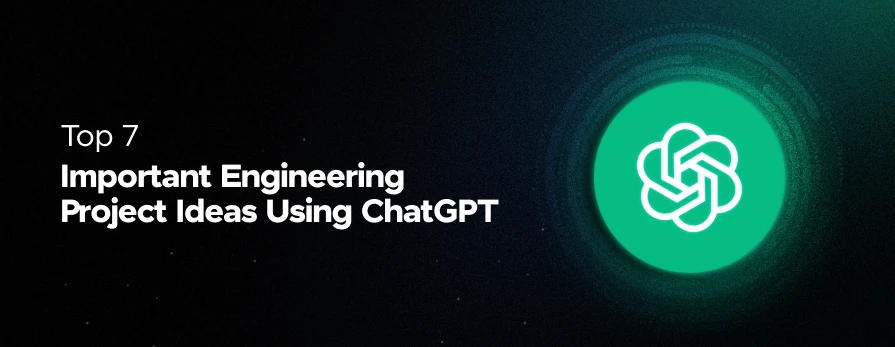


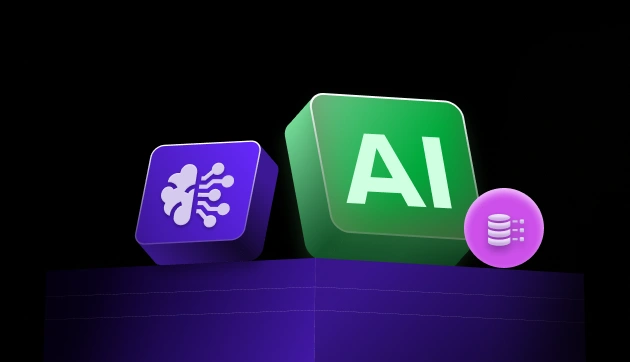

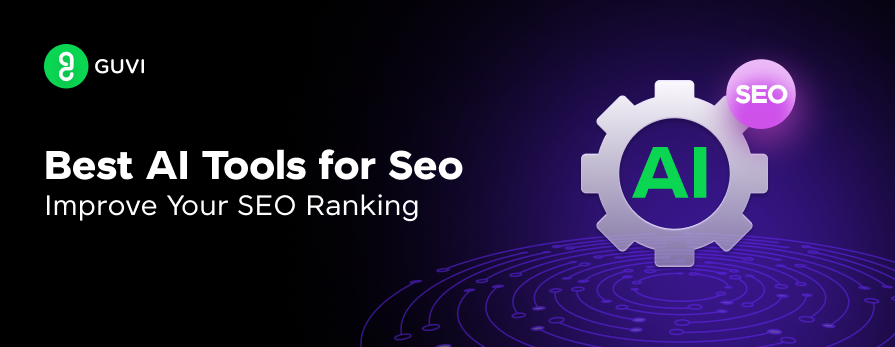
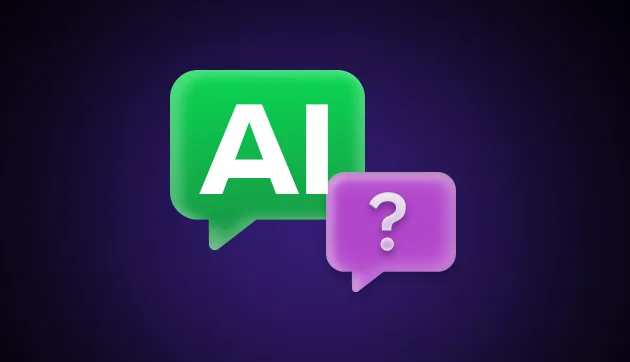


Did you enjoy this article?